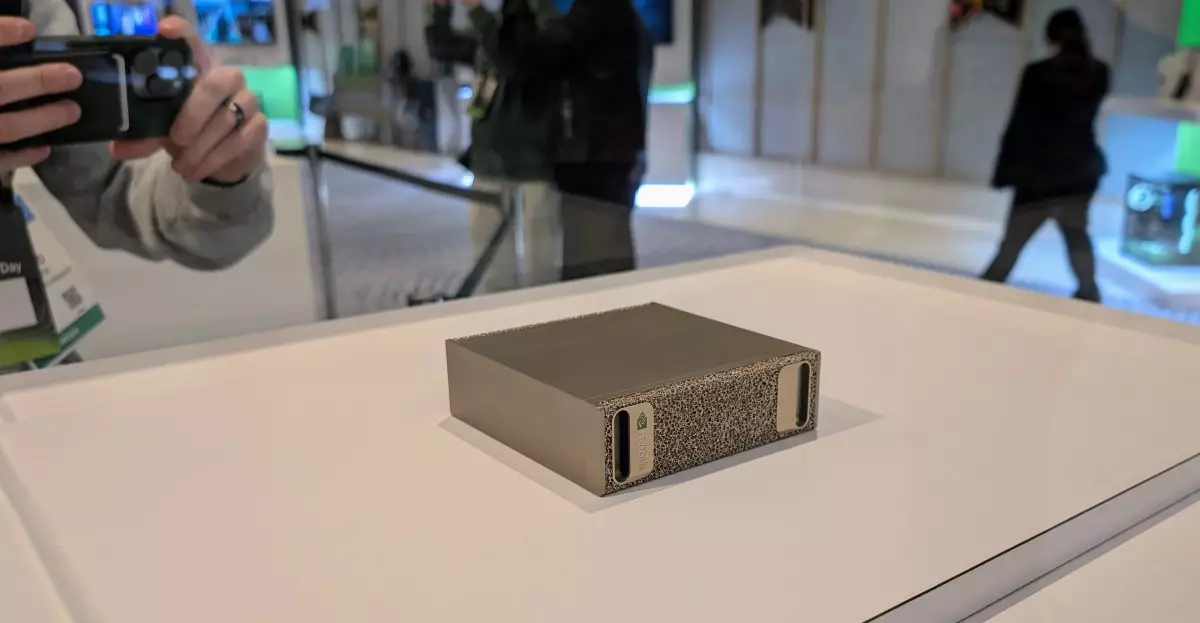In the rapidly evolving landscape of technology, Nvidia has positioned itself as a front-runner with its latest announcement regarding the Grace Blackwell platform. This revolutionary framework is more than a mere technological advancement; it is indicative of a fundamental shift in how industries will harness the power of artificial intelligence (AI). By inviting third-party manufacturers to create their own supercomputers powered by this platform, Nvidia is not just expanding its ecosystem; it is catalyzing innovation across the tech industry. This strategic partnership promises to elevate computing capabilities and redefine our interaction with AI, setting the stage for a new era of intelligent machines.
Asus: The Pioneer of Personal AI Supercomputing
Among the first to respond to Nvidia’s call for collaboration is Asus, unveiling their Ascent GX10, a mini PC designed to harness the robust GB10 super chip. With impressive capabilities such as 1,000 AI TOPS processing power and 128GB of unified memory, the GX10 is a testament to the potential of compact computing. Its aesthetic shift from the industrial elegance of Nvidia’s Spark to a more consumer-friendly design signifies a strategic move to appeal to a broader audience. However, while the choice of a sleek white chassis with a carved pattern reflects modern consumer tastes, it raises questions about durability and heat management—elements crucial for sustained performance in intensive AI tasks.
It remains unclear when Asus will commence preorder sales or what the pricing strategy will look like. Their hesitance may mirror an uncertainty common in the tech sector, urging caution in a competitive market. Should Asus provide more transparency, it could significantly bolster consumer trust and anticipation for their product.
HP’s Pursuit of Premium AI Solutions
Equally exciting is HP’s tease of the ZGX Nano AI Station G1n, which showcases a refined blend of aesthetics and functionality reminiscent of their well-regarded Z2 mini workstation. This design not only appeals to enterprise customers seeking sleek hardware for server racks but also signals HP’s commitment to joining the ranks of high-performance computing solutions. Unlike Asus, HP appears to prioritize a premium feel, which could give it a competitive edge in niche markets.
However, the absence of launch timelines raises a red flag; in the fast-paced tech industry, delayed products can lead to missed opportunities and customer frustration. HP must address these queries proactively to maintain momentum.
Dell’s Distinct Approach—The Power of Simplicity
Dell’s approach is grounded in practicality, exemplified by their Dell Pro Max with GB10. While the black box aesthetic may lack the panache of its competitors, it emphasizes the brand’s focus on functionality over form. However, the location of the power button on the top of the device could complicate usability when housed in server racks—a critical consideration for enterprise systems.
Moreover, the unveiling of the Dell Pro Max with GB300, boasting 20 petaflops of AI performance, highlights Dell’s commitment to high-performance computing. With availability projected for early summer 2025, they are squarely positioning themselves alongside Nvidia’s own DGX Spark, which carries a hefty price tag of $3,000. Customers may feel compelled to explore the Dell alternative, particularly if it offers comparable capabilities at a potentially lower price.
The Competitive Landscape: Room for More
Furthermore, Lenovo’s impending entrance into the GB10 mini-computer market adds another layer to this dynamic space. Their delayed reveal may be strategic, allowing them to assess market reactions to competitors’ initial offerings. While we wait for Lenovo’s design and features, it’s apparent that the supercomputer mini PC segment is becoming crowded, leading us toward integral competition that may ultimately benefit consumers.
With this increased competition, the focus must ultimately shift toward how these devices will perform in both consumer and enterprise settings. As these companies strive to carve out their unique niches in the AI supercomputing arena, the implications for industries reliant on AI technology become increasingly profound.
The race for superior AI capabilities hinges on innovation, effective marketing strategies, and the cultivation of consumer relationships. The collective movement toward creating personal AI supercomputers illustrates not just a shift in products, but a broader evolution in how we harness the incredible potential of artificial intelligence. As we forge ahead, the question remains—who will emerge as the leader in this new computing revolution?

